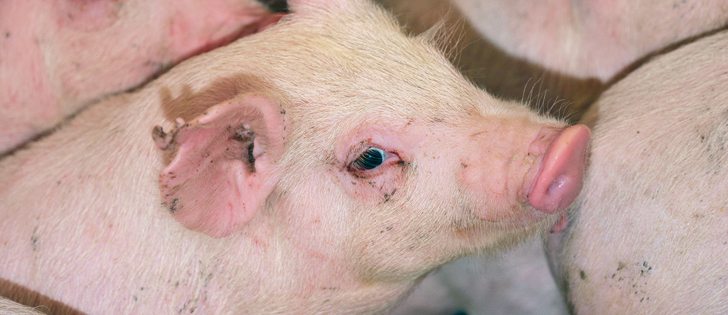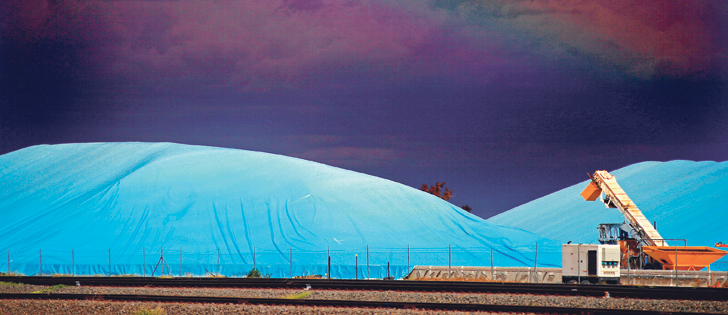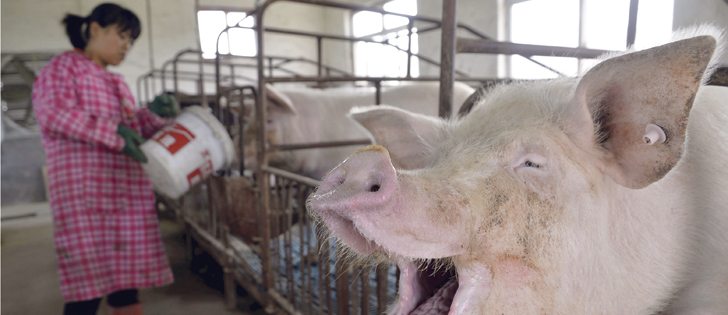The hog price outlook is dire, but most western Canadian farmers should be OK, says analyst Tyler Fulton.
“We could see the writing on the wall,” said Fulton about why most of the independent hog producers Hams Marketing represents locked in fourth quarter prices that were much higher than today’s loss-making levels.
“There was a lot of uptake.”
Fulton is director of risk management with Hams Marketing.
Prices for the Chicago December lean hogs futures contract are low, falling to about US$48 per hundredweight from $56 at the start of September, and following midsummer prices of about $64 per cwt. In 2014, hog futures peaked at more than $120.
Read Also

Critical growing season is ahead for soybeans
What the weather turns out to be in the United States is going to have a significant impact on Canadian producers’ prices
Fulton said the price situation will not improve soon, with another period of weakening more likely.
However, prices could get catastrophically worse if anything causes hog supplies to exceed packer capacity.
“It’s definitely the scariest we’ve seen in 16 years,” said Fulton.
Maximum demand for hogs is what economists describe as “inelastic”, which means that once the maximum is reached, there is zero demand from packers for more.
Exceeding packer capacity can cause brutal price collapses, as in 1998 when there were more pigs coming to market than shackle spaces at slaughter plants.
Prices that year fell to nearly zero, with some farmers not being able to sell their pigs at all, until the excess hogs had been slaughtered. Many producers lost their farms in the aftermath of that crash.
Hog supplies now appear to be large enough to tickle the underside of the capacity maximum, but not quite exceed them, which is good news, Fulton said.
“I think the packers will figure out a way to get through it, but when you look at the price concessions that they’re expecting right now, it’s a grind.”
The market was given a fright recently when a 10,000 per day hog plant in the U.S. briefly closed because of a fire in its rendering facility. Taking any capacity off-line would push things over the edge.
“A plant of 10,000 a day is the difference (between sufficient and inadequate capacity),” Fulton said.
“That’s the margin for error here.”
The fourth quarter of every year is almost always the time of greatest worry. That is because hogs put on weight faster during the cool fall weather, boosting market-ready supply.
Also, a succession of holidays near the end of the year crimps slaughter capacity, so any constraints in the system tend to become obvious then.
That’s the situation this year, with hog production rebounding after the bull market prices of the past couple years.
Fulton said Hams Marketing began extending forward price hedging for its clients back in January, when the coming surge of live pigs could be anticipated. Instead of hedging six months out, producers were locking in prices almost a year out, all the way to December.
That covers most production from most producers, but still many producers will have some hogs not pre-sold, and some producers might have done no hedging at all.
That leaves them in a pickle, because two wildly different scenarios could unfold in coming weeks. If packer capacity isn’t reached, locking in today’s prices perhaps won’t have been necessary and better prices could be grabbed from short-term volatility rallies.
But if the absolute limit of packer capacity is reached, then today’s prices might look attractive in hindsight.
Fulton said he pegs the risk of a meltdown at less than 25 percent, but said it is a real risk.
While farmers having to take today’s prices won’t be happy, packers are reaping strong returns, with many receiving a profit of US$45-$50 per head. That could increase another five percent, Fulton said, based on the present glutted situation.
This is a reversal of the situation a few years ago, when farmers were making huge profits while the packers bled lots of red ink.


















